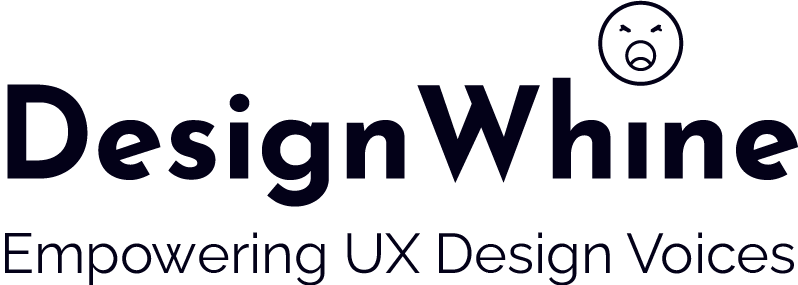eCommerce sites drive traffic, so interface and UX design play a significant role. You might have heard that the first impression is also the last. If a customer visits your eCommerce store, he may make a split-second decision based on the interaction with your store. Here, the first point of contact is UX.
Beyond an appealing landing page and Digital Accessibility, UX draws a roadmap towards successful conversion. Ideally, website design is the first element of targeting your users.
eCommerce UX is pivotal to attracting online shoppers and boosting your site’s conversion rates. Do you know that customer-centric design can attract online shoppers and provide them with a positive user experience?
According to an estimate, 90% of users will leave your site with bad eCommerce UX. More than 70% of business credibility depends on website design. Plus, online shopping has become more popular than ever.
Essentially, to boost sales of your eCommerce site, you need to focus on an eCommerce strategy that can drive conversion rates. In the write-up below – we will discuss how you can drive eCommerce conversion rates with an appealing design.
How can a website design influence conversion rates?
Online eCommerce UX in websites have similar product ranges. For instance, you might see the same clothing brands on most E-commerce websites – This is where you can break the chain.

If you wish to stand out from other eCommerce websites, you have to focus on an appealing website design and seamless eCommerce user experience.
Creating a superior eCommerce UX for a website may require some brainstorming. But once you are there, you can be different in UX approach. With seamless UX, you can drive conversion rates.
Key Factors in boosting Conversion Rates for eCommerce Sites
In an eCommerce business, the conversion rates can boost sales. How? Conversion rate is an action taken by the user which drives sales.
For instance, if a user purchases on the site or subscribes to a newsletter or query submission, it can lead to conversion. Ideally, the user interface can increase the conversion rate by 200%.
UX is the first step to a customer journey – from visiting a site to taking action. The user experience of an eCommerce site positively impacts the website’s conversion rate. Concisely, conversion rates are elemental for an eCommerce site. Further, let’s focus on – how to drive a change and make your website successful.
Conduct User Research
First things first – understanding your target audience is essential to create a base for your website. You can create an effective website that fulfils accessibility for good design along with an understanding of the market needs.
Catering to customers is the first call of an eCommerce store, so your focus should be on the same. Before creating an appealing interface, conduct user research that focuses on valuable insights – something like their pain points, preferences, and behaviors.
Whom are you targeting at the end of the day? YOUR customers, right? It is a good idea to start with a customer journey and develop a plan for your eCommerce website.
Improve Navigation
Once you have an eCommerce plan ready, move to the navigation part. Navigation of your eCommerce website can help to hold your visitor’s interest.
Focus on online store navigation with everything initiated so that customers can purchase seamlessly. Plus, cluttered navigation can frustrate first-time buyers on the site. At times, it can be challenging for those with physical disabilities.
Keeping the navigation part intuitive and simple can improve user experience and drive conversion rates. To improve the product visibility of your eCommerce store, ensure that your store is visually appealing. Besides, who would want to visit a store that does not appeal?
A/B Testing for Performance
Optimizing user interface and user experience with A/B testing plays a significant role in eCommerce. Engaging with the feature can enable a comparison between design variations that sheds light on which UX design can yield higher conversion rates.
Besides, the feature allows you to make product design decisions based on data rather than guesswork. Also, it can give you a hint on – how small changes influence user behaviors and what changes you can implement – to make the interface better.
Using A/B testing for different product designs can improve your site’s user experience. Utilizing the feature can improve the UX and conversion rates of your website.
Focus on Personalization
Your customers will spend more time on your eCommerce store with product personalization. A customer today wants customization and customer service. So focusing on this aspect is significant for your eCommerce store. More than 50% of users are interested in finding – the products they need.
With a customized shopping experience, you will see a boost in conversion rates. Apart from driving conversion rates – it also helps to forge better connections with buyers. Repeated purchases on your site can help to drive sales. An engaging experience with personal recommendations can help your site with conversions.
Use eCommerce Design Best Practices
In the world of tech possibilities, you can utilize many tools to enhance your website. One such way is to use eCommerce design best practices. Utilizing these practices can help you implement proven user-tested solutions.
Doing so can save your budget from expensive trial and error ways. Also, you can consult with an eCommerce development company to help you improve your eCommerce UX design with the usage of advanced tools and supporting services. However, your focus should be on tools and practices that provide – with the best results. Many are available for use – you can integrate with the best tools. The idea is to focus on what is the best from the rest.
Focus on Product Visibility
Another important aspect of UX is the product visibility of an eCommerce site. If users can find the products quickly, half the battle is won. With this move, you can improve the conversion rate and UX of the site. Most importantly, it leads to an increase in the bounce rate.
To enhance product visibility, focus on navigation and design. Also, make your homepage attractive so that buyers hook up to the site. When users get an overview of your services and products – your site will have better
engagement. It is easy to drive conversion rates with a focus on product visibility.
Seamless Checkout Process
A shopping cart is the final destination in the product purchase journey. If the experience is not seamless, it can frustrate a buyer. Implementation of single-page checkout reduces the process of performing many tasks to place an order for a single product. Moreover, a lengthy checkout procedure can demotivate buyers, and they might quit the process.
Optimizing the checkout process is essential if you want to increase sales. Checkout optimization is critical for an online store as it directly affects conversion rates.
Work on the Site’s Speed
Do you know page loading speed is a critical element in SEO? But it’s also one of the vital elements of UX. Well, if your site does not load in three seconds, most users will abandon your site and move to other alternatives. For a similar reason – a faster page loading speed is vital for the UX checklist.
To improve your eCommerce site speed, you can implement various steps like optimizing and compressing the site images, using a content delivery network, and finding a good host.
Besides these strategies, you can focus on code minification after loading web pages. Removing unimportant CSS and JavaScript files can help with page loading.
Conclusion
Online shopping depends on a seamless and attractive website design. Prioritizing UX is essential for high conversions and fostering customer loyalty. A fusion of UX and SEO can help you achieve the desired conversion rates for your website.
By creating intuitive UI and UX, you can boost online business sales. Appearance is everything, and user-friendly appearance can take you a long way.
As tech evolves, customer preferences change, but user experience is still the most vital factor in driving conversion rates. It is time to shape the success of your online business with eCommerce UX.







